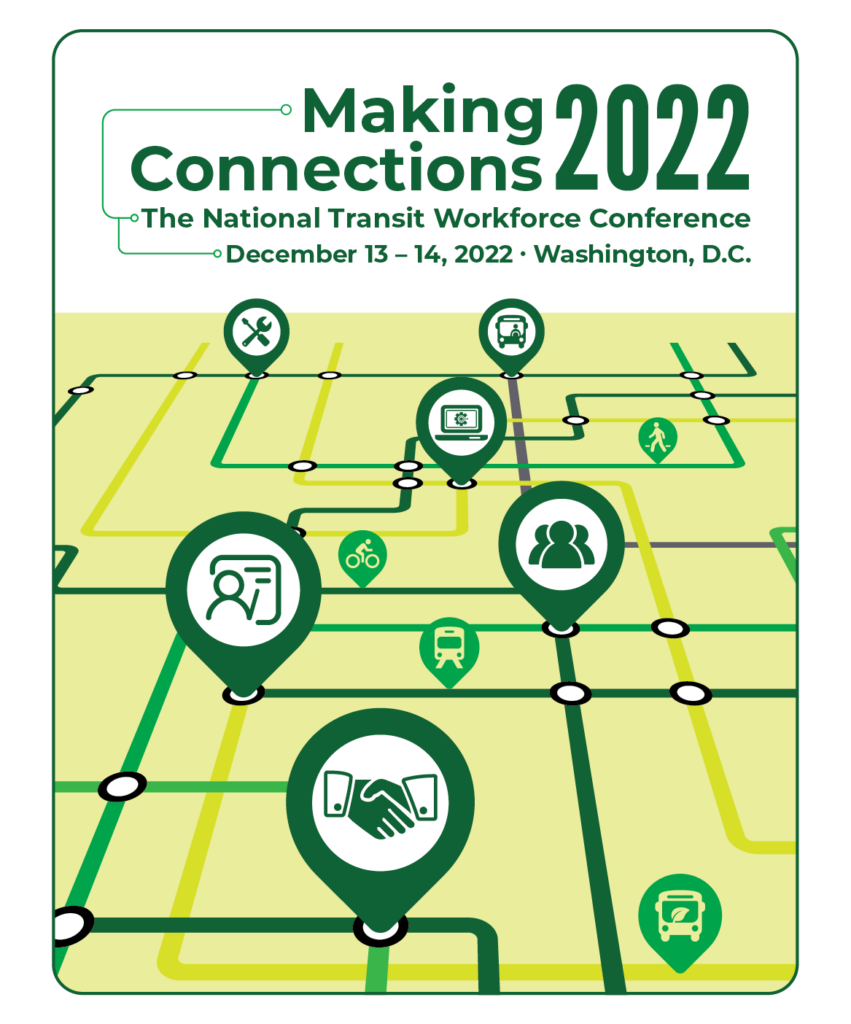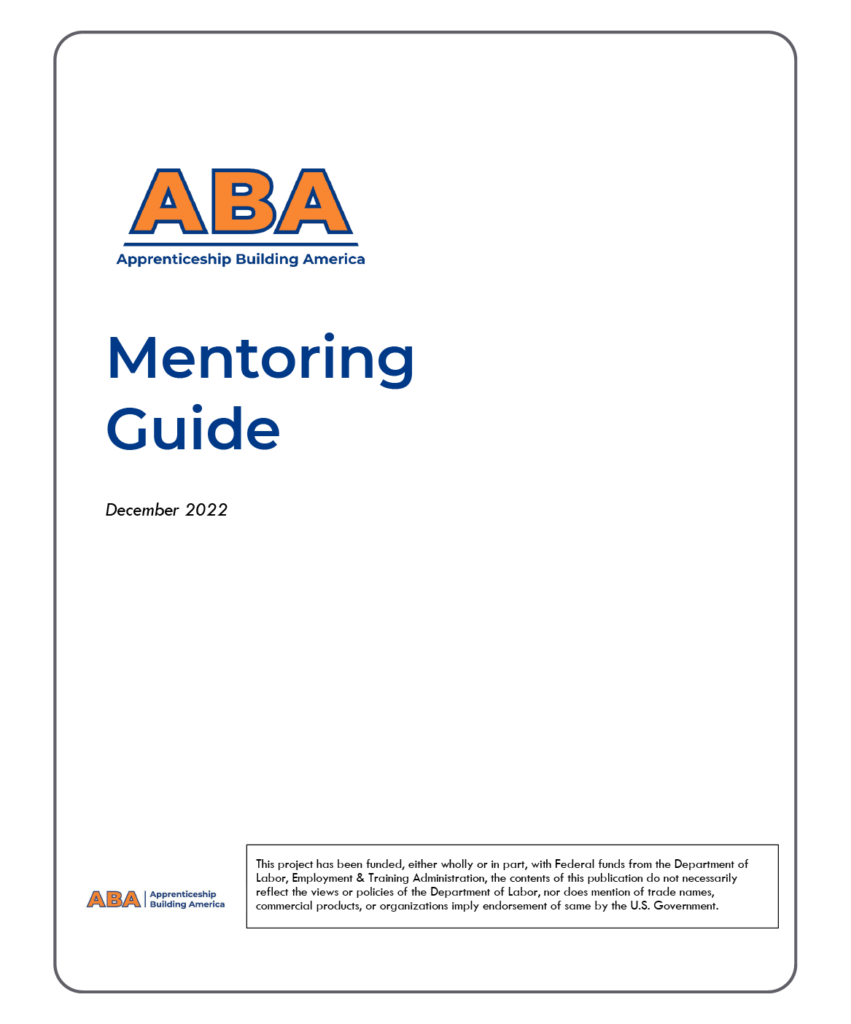Resource Center
The Transit Workforce Center is pleased to host a curated collection of publications and other materials to assist stakeholders engaged in transit workforce development. The Resource Center includes case studies, training materials, research reports, and other materials of interest, including publications produced by federal government agencies, transit organizations, and independent research entities. Resources may be filtered by topic, resource type, and transit mode. This TWC blog post explains how to use the Resource Center.
We are continuing to update the Resource Center regularly. Please contact us via the Request Help menu option if you would like assistance using the Resource Center or are looking for resources on a particular topic. We also welcome suggestions of topics or specific resources to add.
Content in external resources linked from the Resource Center is solely the responsibility of the resource authors and does not necessarily reflect the perspectives of or endorsement by the Transit Workforce Center.

Making Connections 2022 – Growing Your Own Through Apprenticeship: A Joint Approach to Building Skills
This session about apprenticeship was presented as part of TWC’s Making Connections 2022 transit workforce conference in December, 2022.
Transit Workforce Center
December 2022
TOPICS: Apprenticeship, Labor-Management Partnerships, Making Connections Conference, Mentorship, Trainer and Mentor Development, Training
Session Summary: Apprenticeship programs create a foundation for strong, effective workforce development programs. The ability to build and maintain these programs requires strong labor-management partnerships, or, in the case of nonunion agencies, ongoing involvement of, and management engagement with, the frontline workforce. In this session, panelists from transit agencies presented examples of challenges met and lessons learned as they designed and implemented their apprenticeship programs. Attendees heard how apprenticeship can support a variety of frontline transit occupations and the benefits that apprenticeship offers.
Moderator
- Jamaine “G” Gibson: Director of Apprenticeships and Workforce Development – Amalgamated Transit Union
Speakers
- Dexter Bishop: Elevator/Escalator Journeyman – Amalgamated Transit Union/Local 689
- Stephanie Deiger: Chief Human Resources Officer – Southeastern Pennsylvania Transportation Authority
- Brian Funk: Chief Operating Officer and Deputy General Manager – MetroTransit Minneapolis
- Michael Hanssen: Supervisor of Technical Skills Training – Washington Metropolitan Area Transit Authority
- Alec Johnson: Bus Operator Apprenticeship Coordinator – MetroTransit Minneapolis/Amalgamated Transit Union Local 1005

Making Connections 2022 – Driving Bus Operator Recruitment and Retention: Challenges, Opportunities and Innovation
This session about bus operator recruitment and retention was presented as part of TWC’s Making Connections 2022 transit workforce conference in December, 2022.
Transit Workforce Center
December 2022
LEARN MORE
Session Summary: A headline issue confronting all transit systems today – how to attract and retain bus operators in a tight labor market. This lively session began with presentations from the TCRP F-28 research team and TransitCenter on their recently published national research findings on recruiting, developing and retaining transit bus operators. Labor and management industry practitioners from multiple locations then shared their recruitment approaches and strategies that have been most effective on the ground, and TWC staff summarized the National Transit Frontline Worker Recruitment Campaign.
Moderator
- Rob Puentes: President and CEO – The Eno Center for Transportation
Speakers
- Julia Castillo: Executive Director – Heart of Iowa Regional Transit Agency
- James Duff: Assistant Vice President, Human Resources – Dallas Area Rapid Transit
- Jeff Hazen: Executive Director – Sunset Empire Transportation District
- Steve Jovel: Transportation Superintendent – Santa Clara Valley Transportation Authority
- Robin Phillips: Executive Director – National Rural Transit Assistance Program
- Harpreet Singh: JWI Director – Amalgamated Transit Union Local 265
- David Stephen: Senior Communications Specialist – International Transportation Learning Center/Transit Workforce Center
- Chris Van Eyken: Program Manager – TransitCenter
 Driving Bus Operator Recruitment and Retention Session Slides
Driving Bus Operator Recruitment and Retention Session Slides
 ISU Returning Citizens Presentation Slides
ISU Returning Citizens Presentation Slides

Making Connections 2022 – Hands-On Instructional Training for Transit Trainers
This session about hands-on instructional training was presented as part of TWC’s Making Connections 2022 transit workforce conference in December, 2022.
Transit Workforce Center
December 2022
LEARN MORE
Session Summary: Hands-on instructional training is a critical piece to any organization’s training program. This workshop addressed hands-on training and its importance, best practices, lessons learned, and how to create effective hands-on training. Workshop participants observed hands-on welding simulation. The goal of this session was for participants to leave with the knowledge and resources to make hands-on training impactful and meaningful!
Moderators
- Kristen Ribaudo: Instructional Systems Design Consultant – International Transportation Learning Center/Transit Workforce Center
- Grant Young: Instructional Systems Design Consultant – International Transportation Learning Center/Transit Workforce Center
Speakers
- Ed Hogan: Chief Welding Instructor – Southeastern Pennsylvania Transportation Authority
- Grace Kuka: Welding Instructor – Southeastern Pennsylvania Transportation Authority

Making Connections 2022 – Designing an Impactful Training Program: Linking Program Design to Classroom Learning and On-The-Job Training for Transit Frontline Workers
This session was presented as part of TWC’s Making Connections 2022 transit workforce conference in December, 2022. Please click “Learn More” to view session details. A link to the presentation slides is included.
Transit Workforce Center
December 2022
LEARN MORE
Session Summary: This workshop covered the basic building blocks of program design. Participants evaluated the pieces needed to develop a robust program that enables trainers to link good program design to effective classroom and on-the-job learning. This workshop was relevant to those looking to build new programs or refine current programs.
Moderator
- Grant Young: Instructional Systems Design Consultant – International Transportation Learning Center/Transit Workforce Center
Speakers
- Mike Glaeser: Manager, Bus Maintenance Training – Washington Metropolitan Area Transit Authority
- Colleen May: Senior Director of Training – Southeastern Pennsylvania Transportation Authority
- Danielle Wallace: Apprenticeship and Pathways Manager – King County Metro Transit

Making Connections 2022 – Designing Safety: Bus of the Future and Beyond
This session about bus operator safety was presented as part of TWC’s Making Connections 2022 transit workforce conference in December, 2022.
Transit Workforce Center
December 2022
LEARN MORE
Session Summary: In the hierarchy of health and safety protections, engineering controls are at the top. This session addressed the critical issues of operator assaults and operator safety through the lens of safety by design, with a major focus on the significant planning work that has been done to create an effective operator barrier against assault and respiratory hazards. Other advances in safety-related design, such as blind-spot elimination for protection of pedestrians, ergonomics and accessibility, were also reviewed.
Moderators
- Jack Clark: Executive Director – International Transportation Learning Center/Transit Workforce Center
Speakers
- Christy Campoll: Senior Associate – RLS & Associates Inc.
- Brian Sherlock: Safety Specialist – Amalgamated Transit Union
- Mohammed Yousuf: Director, Office of Infrastructure, Safety and Asset Innovation – Federal Transit Administration

Making Connections 2022 – Considerations on the Future of Human-Automation Teaming in the Transit Workforce
As part of the plenary session on “Navigating New Directions: Emerging Technologies and the Future of Transit Workforce” at Making Connections 2022, Carnegie Mellon researchers presented on a study released in spring 2022 on bus automation, examining issues related to the practical safety and operational limitations of deploying driverless buses in transit systems while citing many technologies that can enhance safety and improve driver performance.
Transit Workforce Center
December 2022
TOPICS: Making Connections Conference, Training

Making Connections 2022 – Online Training and Learning Technologies
This session about online training was presented as part of TWC’s Making Connections 2022 transit workforce conference in December, 2022.
Transit Workforce Center
December 2022
TOPICS: Making Connections Conference, Training
Session Summary: The Online Training and Learning Technologies Workshop addressed how online training is evolving, strategies to start or expand an online training program, and ways to incorporate learning technologies, regardless of training program size. The session included an exciting snapshot of how cutting-edge learning technologies are successfully being used in the transit industry today.
Moderator
- Grant Young: Instructional Systems Design Consultant – International Transportation Learning Center/Transit Workforce Center
Speakers
- Julie Deibel-Pundt: Program Director, Instructional Design – International Transportation Learning Center/Transit Workforce Center
- Michael Flocchini: Training and Education Manager – AC Transit
- Todd Marks: Founder, CEO and President – Mindgrub Technologies

Apprenticeship Building America: Mentoring Guide
Mentoring is a key staple of a successful apprenticeship program. This guide provides an overview of the qualities of a good mentor, the activities a mentor undertakes, tips for mentoring youth apprentices, and more.





